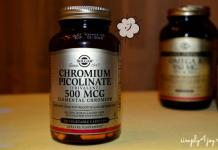The wiring for hot water supply does not differ from cold, there are only a couple of nuances. Some consumers do not need hot water, some use their resources for heating. The washing machine and dishwasher can provide themselves with the working fluid of the desired temperature. This also applies to some other plumbing equipment, where hot water is not needed, and heating is carried out on its own.
The following pipe laying methods are used:
- laying pipes for cold and hot water supply one above the other, then the top one will be used for hot water supply;
- with horizontal laying, the right pipe belongs to the DHW;
- open and closed methods, for which the rules described above also apply.
In the event of a water spill, closed laying methods cause additional obstacles in order to change the damaged pipes. Sometimes it is required that the replacement be carried out in a short time, this again refers to the advantages of open circuits. Laying pipes in recesses or special panels is used to give the apartment an aesthetic appearance. A protruding pipeline can spoil the look of an expensive repair, in which every detail matters.
Transportation of water from the main line to end users. Old schemes have low efficiency; during repair work, the replaced water supply systems are laid using improved technologies. New methods allow not to lose the temperature of the coolant due to constant circulation. Decent water quality is ensured on any floor, problems with temperature differences are a thing of the past.
Network diagrams
So, let's start with the question of how water enters our homes, I mean hot. It moves from the boiler house to the house, and is distilled by pumps installed as boiler equipment. Heated water moves through pipes called heating mains. They can be laid above or below ground. And they must be thermally insulated in order to reduce the heat loss of the coolant itself.
Ring connection diagram
The pipe is brought to apartment buildings, from where the route is branched into smaller sections that supply the coolant to each building. A pipe of smaller diameter enters the basement of the house, where it is divided into sections that deliver water to each floor, and already on the floor to each apartment. It is clear that such an amount of water cannot be consumed. That is, all the water pumped into the hot water supply cannot be consumed, especially at night. Therefore, another route is being laid, which is called the return line. Through it, water moves from the apartments to the basement, and from there to the boiler room through a separately laid pipeline. True, it should be noted that all pipes (both return and supply) are laid along the same route.
That is, it turns out that the hot water itself inside the house moves along the ring. And she is constantly on the move. In this case, the circulation of hot water in an apartment building is carried out precisely from the bottom up and back. But in order for the temperature of the liquid itself to be constant on all floors (with a slight deviation), it is necessary to create conditions under which its speed is optimal, and it does not affect the decrease in the temperature itself.
It should be noted that today separate routes for hot water supply and for heating can approach apartment buildings. Or one pipe with a certain temperature (up to + 95С) will be supplied, which in the basement of the house will be divided into heating and hot water supply.
 DHW wiring diagram
DHW wiring diagram
By the way, look at the photo above. A heat exchanger is installed in the basement of the house according to this scheme.
That is, water from the route is not used in the hot water supply system. It only heats the cold water coming from the water supply network. And the DHW system at home is a separate route, unrelated to the route from the boiler room.
The house network is circulating. And the water supply to the apartments is produced by a pump installed in it. This is by far the most modern scheme. Its positive feature is the ability to control the temperature regime of the liquid. By the way, there are strict norms for the temperature of hot water in an apartment building. That is, it should not be lower than +65C, but not higher than +75C. In this case, small deviations in one direction or another are allowed, but not more than 3C. At night, deviations can be 5C.
Why is this temperature
There are two reasons.
- The higher the water temperature, the faster pathogenic bacteria die in it.
- But you have to take into account the fact that the high temperature in the DHW system is burns when in contact with water or metal parts of pipes or mixers. For example, at a temperature of +65C, a burn can be obtained in 2 seconds.
 Water temperature
Water temperature
By the way, it should be noted that the water temperature in the heating system of an apartment building can be different, it all depends on various factors. But it should not exceed + 95C for two-pipe systems, and + 105C for single-pipe systems.
Attention! According to the legislation, it is determined that if the temperature of the water in the DHW system is 10 degrees below the norm, then the payment is also reduced by 10%. If it is with a temperature of +40 or +45C, then the payment is reduced to 30%.
That is, it turns out that the water supply system of an apartment building, meaning hot water supply, is an individual approach to payment, depending on the temperature of the coolant itself. True, as practice shows, few people know about this, therefore disputes usually never arise on this issue.
Dead End Schemes
There are also so-called dead-end schemes in the DHW system. That is, water enters consumers, where it cools down if it is not used. Therefore, in such systems there is a very large overrun of the coolant. Such wiring is used either in office premises or in small houses - no more than 4 floors. Although all this is already in the past.
The best option is circulation. And the simplest thing is to enter the pipe into the basement, and from there through the apartments through the riser, which runs through all floors. Each entrance has its own stand. Reaching the top floor, the riser makes a U-turn and, past all the apartments, descends into the basement, through which it is discharged and connected to the return pipeline.
 dead end scheme
dead end scheme
The value of the temperature regime of hot water
Keeping track of what the temperature of the water flowing from the hot tap should be, not only for economic reasons, but also for reasons of epidemiological safety.
This point is especially relevant for young children, elderly people with disabilities and other groups of citizens. In order not to endanger the life and health of citizens, the water temperature should not deviate from the established norms more than the maximum possible deviations, both up and down.
The water temperature within the established norms is not just a matter of comfort, but also of the sanitary and epidemiological safety of citizens.
Sometimes, although it happens quite rarely, the water temperature can significantly exceed the established norms. Such a deviation creates a risk of thermal damage to the skin.
To prevent this, you should know what consequences for the skin can lead to exposure to hot water of a certain temperature:
- + 50 ° C - when the skin is exposed to water of this temperature for more than 1.5 minutes, a slight thermal burn of the skin may occur;
- + 55 ° C - when exposed to water of this temperature, a burn of the skin can occur within 15 seconds;
- +60°C - thermal damage to the skin will occur when exposed for 5 seconds;
- +65°C - severe thermal damage to the skin will occur when exposed to a duration of 2 seconds;
- + 70 ° C - when exposed to water of this temperature on the skin, severe thermal damage occurs instantly.
Cases when water flows from a hot tap, the temperature of which is much lower than the standard, are very common. This not only leads to an increase in its consumption and, as a result, financial costs for paying for a poor-quality service, but also makes it possible to develop many negative situations.
For example, in a hot water supply system, in the event of a significant drop in water temperature, the most favorable conditions are created for the life and development of various harmful microorganisms that can cause a number of diseases in humans.
Most often in such conditions, the legionella bacterium begins to develop. Warm fresh water is the most favorable environment for its life and reproduction. This pathogenic bacterium is a gram-negative rod, the size of which does not exceed 3 microns.
The underheating of the water entering the hot water supply system leads to the fact that the most favorable environment for legionella is created in pipes and boilers.
As a result, they begin to develop rapidly and form huge colonies. This, in turn, poses a significant threat to human health.
For these pathogenic bacteria, the optimal habitat is warm fresh water. It is for this reason that they quite often infect low-temperature heating systems, where they create entire colonies.
Legionella can cause many diseases, the most severe of which is pneumonia with various complications.
This bacterium can enter your body while taking a bath or shower, when performing various hygiene procedures, as well as from dishes that have been washed with contaminated water as a result of underheating.
When the water is heated to temperatures that are set by the current regulations, then the bacteria have no chance to survive and multiply, which means that the likelihood of your infection is reduced to almost zero. For water to be fully thermally disinfected, it must be heated to at least 80°C.
Let's look at how water temperature affects the development and vital activity of legionella:
- When the water temperature is less than 20°C, the bacterium loses its activity, it ceases to multiply, falls into anabiosis, but it does not die;
- Water, the temperature of which ranges from 25 to 45 ° C, is the most favorable environment for the habitat, life and reproduction of this bacterium;
- If the water temperature stays at 55°C for 6 hours, these bacteria will die;
- If the water temperature is 60°C, legionella colonies will be destroyed within 35 minutes;
- When the water temperature rises to 65°C, the bacteria are killed within 2 minutes;
- At a water temperature of 70 to 80°C, there is a complete thermal disinfection of water.
Calculation of the required amount of hot water
A closed water supply system, just like an open one, requires the calculation of the required amount of hot water supply. The calculation is performed depending on some factors that are determined by the number of residents in a particular building and their lifestyle.
When calculating the hot water supply, the following is taken into account:
- expected water temperature;
- the number of people living in the building;
- operational characteristics of sanitary equipment;
- frequency of use of the shower, bath and other;
- number of bathrooms that use hot water.
Consider the calculation on the example of a standard family of four people. For example, a 140 liter bath is filled in up to 10 minutes and a shower is used in parallel, which consumes approximately 30 litres. That is, it turns out that in 10 minutes the water heater must provide the building with water of the desired temperature in a volume of 170 liters. These calculations are given under the condition of average water consumption. In real life, the volume of hot water consumption may differ slightly.
Features of open hot water supply
When installing an open hot water supply, it is necessary to take into account the principle of operation. Open DHW is of two types, depending on the type of circulation and transportation of the coolant to the radiators. There are open systems with natural circulation and with the use of pumping equipment for this purpose.
Natural circulation is carried out in this way: an open system eliminates the presence of excess pressure, therefore at the highest point it corresponds to atmospheric pressure, and at the lowest point it is slightly higher due to the hydrostatic action of the liquid column. Due to the low pressure, natural circulation of the coolant occurs.
The principle of natural circulation is quite simple, due to the different temperature of the coolant and, accordingly, different density and mass, cooled water with a low temperature and a larger mass displaces hot water with a smaller mass. This simply explains the existence of a gravity-flowing system, which is also called gravitational. The main advantage of such a system is absolute energy independence, if parallel heating boilers do not use electricity.
It's important to know! Gravity pipelines are made with a large slope and diameter. .
If natural circulation is not possible, pumping equipment is used, which increases the flow rate of the coolant through the pipeline and reduces the heating time of the room. The circulation pump produces the movement of the coolant at a speed of 0.3 - 0.7 m / s.
Hot water supply of an apartment building
Hot and cold water supply systems in an apartment building are designed according to fundamentally different schemes.
A well-organized hot water supply is a centralized circulation system with one or two pipe risers.
In the first case, all risers of a certain section of the building are combined into one, which is called "idle", since it does not have consumers. The risers are looped along the height of the house in order to maintain the same pipe diameters throughout the building and provide better water distribution for each apartment.
At the same time, for buildings with a different number of floors, risers of a certain diameter are designed:
- up to 5 floors - 25 mm;
- 6 floors and above - 32 mm.
The heated towel rail in the bathroom is installed on the supply riser, which has its drawbacks: if the water in the boiler room is heated weakly, it will reach the farthest residents already cooled down. In order to avoid such situations, experts recommend inserting a special jumper pipe between the direct and reverse wiring (bypass).
In the case of a 2-pipe wiring, the system has 2 risers - for supplying and discharging water. The outlet circulation riser is nothing more than a heating elbow used as a heated towel rail.
Cold water supply of an apartment building
Pipelines for cold water supply to consumers of apartment buildings are made according to a dead-end scheme, that is, one branch running from the water supply source to the very last consumer, where it ends.
At the inlet of the cold water supply to the building, a water meter assembly is installed, consisting of steel pipes, fittings and a water meter. Initially, the meter is mounted in such a way that the direction of movement of cold water coincides with the arrow on the device case.
The node is rigidly attached to the surface (on the floor or on the wall), while paying attention to the fact that the meter axis is at a height of 30-100 cm from the floor. . Where the pipeline turns, metal supports are installed
Where the pipeline turns, metal supports are installed.
Water supply of an apartment building: snip
It should be remembered that the design of the internal water supply of an apartment building is carried out taking into account the relevant building codes and regulations, namely SNiP "Internal water supply and sewerage of buildings" (No. 2.04.01-85).
This document normalizes important parameters that affect the quality of the water supply system. This SNiP contains sections that describe in detail information regarding:
- temperature and other indicators of water in the internal pipeline network;
- rules for calculating water consumption depending on the number of consumers and sanitary appliances;
- the composition and rules for choosing a cold water plumbing system, depending on sanitary and hygienic requirements, technical and economic feasibility, etc.;
- parameters of the hot water plumbing system;
- fire water supply, etc.
Designing the water supply of an apartment building is a responsible and time-consuming task, which a true professional designer can handle competently and quickly.
Pipe selection
The hot water supply scheme - open or closed - sooner or later requires the replacement of pipes. What pipes can be used for hot water supply?
Diameter
For a tenant of an apartment building, all calculations in an open water supply system come down to selecting the diameter of pipes (pipes and risers). What diameters to use when repairing, replacing or installing a hot water supply pipe with your own hands?
The standard size of steel water supply connections is DN15. A dead-end or circulation riser with draw-off points has a size of DN25 - DN32, an idle riser - DN20.

Water supply stands. Diameter - 25 mm
When choosing a pipe size, it is useful to remember a couple of subtleties:
- DU (it is also a conditional passage) approximately corresponds to the inner diameter of the pipe. Plastic and metal-polymer pipes are marked with an outer diameter, so their size should be one step larger than that of steel pipes (DN20 instead of DN15, and so on);

For steel pipes, the conditional passage is indicated, for plastic pipes - the outer diameter
- When replacing old pipes, the capacity of the new water supply should not be lower. Simply put, the inner diameter of new risers and piping should be at least as large as the old ones.
Material
On hot water supplied from the elevator unit, only metal pipes can be used (see Service life of metal pipes) . The instruction is associated with the notorious instability of water supply parameters: in case of water hammer or overheating, metal-plastic or polypropylene water pipes very often cause apartments to be flooded.

Rupture of a metal-plastic pipe when the permissible pressure is exceeded
Note: if the tenant of the apartment changed the pipes on his own, and used material that was not provided for by the building project, he will have to cover all the damage from flooding.
Here they are:
| Image | Description |
copper plumbing | Copper (see. Copper pipes for water supply). They can be mounted on solder fittings, compression or press fittings. Copper tolerates pressure surges up to 200-240 kgf / cm2 and heating up to 150 degrees, water hammer and even defrosting. |
In the photo - water supply connections made of corrugated stainless steel | Corrugated stainless. With the same characteristics, they boast extremely simple installation: the fitting connection is assembled in 30 seconds using a pair of gas or adjustable wrenches. |
Grade
We figured out what an open hot water supply scheme is. Now let's try to evaluate it against the background of an alternative - a closed heat supply scheme (with water heating for household needs in a heat exchanger that uses the heat of the coolant).
Advantages
They are obvious: simplicity and cheapness. The elevator assembly does not contain complex and expensive equipment. Its maintenance is reduced only to the annual revision of valves and valves, as well as to the periodic verification of the size of the nozzle (it also suffers from abrasive wear).

Elevator and nozzle removed for verification
disadvantages
Alas, there are many more.
- Low water quality. If the water in the cold water system (heated in a heat exchanger in a closed heating system) is drinking water and must comply with the requirements of SanPiN 2.1.4.10749-01, then the heating system coolant may contain a large amount of suspensions, iron oxides and other impurities;
- High probability of water hammer. If you quickly stop the circulation in the heating main or elevator (for example, by sharply turning the ball valve lever), the inertia of the water flow will cause a short-term pressure surge at its front;

Consequences of water hammer in the DHW system
- Strong influence of the human factor on the actual parameters of water supply. About this - a little more.
The main thing that differs from closed open hot water supply is the norms of temperature and pressure. They correspond to the parameters of the heating main: the pressure varies from 3 to 7 kgf / cm2, and the water temperature should be in the range of 50-75 degrees.
For comparison, water is supplied from a heat exchanger in a closed heat supply system with a pressure of 1.5–5 kgf/cm2 and a temperature of 50–65°C.
However, if a lazy or forgetful locksmith does not switch the DHW to the return line with the onset of cold weather, water from the supply will flow into the DHW system from the elevator unit, which, recall, can heat up to 150 degrees, which is prohibitively high for all types of polymer and metal-polymer pipes, flexible connections and rubber gaskets on crane boxes.
Plastic and flexible eyeliners do not tolerate prolonged overheating very well.
Dismantling the sewer in the apartment
Replacing an old sewer pipe with a new one has many nuances that must be taken into account in this process. Initially, it is necessary to determine the most vulnerable places in the pipe to deformation. It is also required to disconnect all existing connections from the pipe and remove all debris. All this is necessary to ensure more convenient work.

Then, near the riser, the tap is turned off, which supplies water to the apartment. If the replacement is long, then it is best to completely disconnect the entire riser from the water supply. At the very last moment, it is necessary to carefully dismantle the cast-iron sewer pipes. All this can be done with adjustable wrenches or other tools.
It is necessary to mount a new pipe in a complete set with a variety of adapters and couplings, since then it will not be possible to do it qualitatively. All connections must be coated with sealant to protect the riser from leakage.
Advice. All fittings or cuffs must be clean. Silicone grease should be designed specifically for connecting sewer pipes.
Hot water supply
Hot water supply in an apartment is a whole system of pipelines and various devices that are used to heat cold water and distribute hot water to consumers. In some cases, special pipes are used in bathrooms or toilets to heat such rooms in the apartment. They have the additional function of dryers.
 Standard diagram of a hot and cold water supply system at home
Standard diagram of a hot and cold water supply system at home
All hot water supply systems can be divided according to several criteria:
local hot water systems;
centralized systems;
open heating networks;
closed heating networks.
According to the radius of action, hot water supply systems are divided into local and central.
Local hot water systems
Local hot water supply systems are equipped for a group of small objects or one building. Water in this case is heated directly by the consumer. Water heating is carried out using gas or electric flow-type boilers.
Such systems require regular maintenance and are used only if it is not possible to use a centralized hot water supply.
 Local hot water system
Local hot water system
The advantage of local hot water supply systems:
offline work;
ease of repair;
small heat losses.
Central hot water systems
The appearance of central systems for supplying hot water to an apartment is due to the elimination of district and local boiler houses, as well as heat supply systems. As for convenience, central hot water systems will be much more practical.
 Scheme of the device for centralized hot water supply of an apartment building
Scheme of the device for centralized hot water supply of an apartment building
All this depends on the fact that there is no need to install appropriate equipment for heating cold water and additional wiring. Also, the system of such hot water supply has its drawbacks. Pipes need to be constantly maintained and repaired, but local utilities can rarely fulfill customer requests. There are also large drops in water pressure in the system and insufficient temperature, which cannot be said about local water supply systems.
To heat water and supply it to the consumer, centralized systems can use open or closed heating networks. Open heating networks provide for the mixing of network water with that already heated in special equipment. After that, the water is supplied to consumers. Closed heating networks provide for heating water through the surface. The heat carrier (superheated water or steam) and the heated water do not come into contact in any way.
Open heating networks are considered more rational, but the quality of the supplied water can significantly deteriorate in terms of temperature. Such systems are currently very rare to find.
 Closed scheme of heating and water supply at home
Closed scheme of heating and water supply at home
Hot water supply in the apartment can be carried out in several ways:
Heating water in the boiler room with subsequent supply to the consumer.
Water heating is carried out in special points located in neighborhoods or districts.
Water heating is carried out using special equipment, which is installed in the basement of a multi-storey building.
Water is heated in the consumer's apartment.
Hot water supply can be circulating. In this case, the water is constantly moving through the pipes and provides not only the supply of hot water, but also heating. The water is constantly heated. There is also a dead-end hot water supply. In this case, the water is not used immediately and may simply cool down over time. It is for this reason that special containers are installed in the apartment to heat and maintain the temperature of the water.
With regard to savings, it will be rational to use individual systems for providing hot water to the apartment. For the centralized supply of hot water, the user must pay a monthly fee.
 Diagram of a boiler device for heating water
Diagram of a boiler device for heating water
If it is possible to use a boiler to supply hot water to the apartment, then this will be the most economical option, since water is paid for by a cold water meter. The consumer provides himself with hot water.
Equipment required for network operation
A closed DHW system is a rather complex engineering and technical system, and a set of certain equipment is required to ensure uninterrupted, and most importantly, safe operation.
Water metering unit
It is through it that water is supplied to the house plumbing. It has a water meter installed. In addition, the design of the unit provides for the possibility of shutting off the water supply during the repair of pipeline fittings, both scheduled and emergency. The composition of the water meter unit is installed:
- magnetic or mesh coarse filter;
- taps and valves through which cold water is supplied;
- measuring instruments - manometers, thermometers;
- bypass - a bypass pipeline, which is used during the maintenance of the water meter unit.

Of course, to ensure the operation of the DHW system, a pipe system is involved, it can be divided into three groups:
- bottling;
- risers;
- carts.
Water is transported to the risers through spills located in the basement of the building. Through them, it is supplied directly to the apartments and through the supply lines it goes to the end consumers - sanitary equipment, household appliances, heated towel rails, etc. There are many schemes for the location of pipes for each group. For example, through risers located in one apartment, water can be supplied to neighboring housing.
Pipe diameters are determined when designing a building, but as a rule, the following dimensions are maintained:
- Bottling from 32 to 125 mm;
- Risers from 25 to 40 mm;
- Eyeliners within 15 - 20 mm.
When developing a project for a closed DHW system, the following materials are laid:
- metal-plastic;
- pipes made of food grade stainless steel;
- galvanized pipes.
When ordering pipes, remember that metal-plastic pipes can be designed for different pressures and different operating temperatures. By the way, during the overhaul, dishonest contractors install pipes that do not meet the requirements of the working documentation, the same applies to pipeline fittings.
Advantages and disadvantages of the system
An open DHW system is advantageous for maximum heat transfer at minimum heat carrier costs. The equipment itself has a low cost and does not require additional installation of expansion tanks, pumps and other accessories.
The systems do not require additional operating costs, and also have high safety and reliability indicators. The advantage of using it is that it is easy to drain and refill the water from the system, which is important in the summer-winter period. The expansion tank makes it easy to fill the system and bleed excess air.
Regardless of the leaks, the structure continues to function. The working pressure is not large and the presence of malfunctions does not affect it. Thanks to this, it is easy to exercise and recharge. It is not necessary to monitor the maximum pressure and therefore you can add water directly to the tank with a bucket.
It's important to know! The disadvantages include the fact that with intensive analysis, the liquid cools quickly and heats up more slowly. . The quality of water in the heat carrier for hot water supply leaves much to be desired, therefore, for purification and further use, one has to spend money on deaeration and chemical water treatment.
Application of the system is not possible during the summer period
Heating the heating circuit to produce hot water is unprofitable.
The quality of water in the heat carrier for hot water supply leaves much to be desired, therefore, for purification and further use, one has to spend money on deaeration and chemical water treatment.
The system cannot be used during the summer period. Heating the heating circuit to produce hot water is unprofitable.
Payment
Finally, we will answer a few questions, one way or another related to the tariffs for heat and hot water growing every year.
How is heating and hot water billed?
The key parameter in calculating payment for heating is the amount of heat used to maintain a comfortable temperature in the apartment or to heat water. The cost of thermal energy for 2017 is 1000 - 1800 rubles per gigacalorie, depending on the region.

Utility tariffs for 2017 for the city of Berdsk
However, heat meters are far from being in all apartments, so the receipts appear much more often:
- Fixed payment for heating per square meter (it is calculated as the product of the heat consumption standard for a given region and the price of a unit of thermal energy);

Simplified scheme: the cost of heating is calculated by the footage of the heated area
- The cost of a cubic meter of hot water, taking into account the meter (90-170 rubles per cubic meter).
How can you save on heating?
To reduce costs you need:
- Install heat meters on each radiator;
- Mount chokes or thermal heads on the connections to limit the flow of coolant through the heater.

In the photo - a sectional radiator with a heat meter and a thermostatic head that throttles the supply
Can hot water be used to heat an apartment?
Technically yes. To do this, it is enough to form a closed heating circuit (for example, the simplest one-pipe Leningrad) and connect it to the gap in the DHW riser. Since there are no metering devices on the riser, the heat received in this way will be absolutely free for you.

The simplest heating system - Leningradka
But:
- Any change in the configuration of public utility networks requires the approval of the housing organization and, in the case of hot water and heating, from the relevant service providers. Of course, none of the organizations will give permission for such a change in the heat supply scheme;
- Uncoordinated redevelopment of communications is an administrative offense and is punishable by a fine with an order to restore the original configuration at your own expense;

The Housing Code considers uncoordinated redevelopment of communications as an administrative offense
- Finally, the main thing: you can disconnect from the central heating system only at the entrance or at home, with the provision of an alternative heating scheme plan and coordination with electricity or gas suppliers (alternative heat sources). Without the official termination of the heating service, you will continue to receive bills that you want to get rid of.
To stop paying for central heating services, you need to cut off the heating devices from the heating risers and draw up a disconnection act with representatives of the housing
The device of an open water supply scheme

Any type of water supply provides for a source of water, a pump used to lift water, lay pipelines, collectors that distribute water through pipes, and a water heater is additionally installed for hot water.
Water supply can be carried out according to an open or closed scheme. The main difference between the schemes is that in closed cycles, water circulates in a closed circuit, and the consumer does not have access to it. In the open, devices capable of consuming are connected to itself. Therefore, an open DHW system requires constant replenishment from a water source. In them, water is the heat carrier.
Dear readers!
Our articles talk about typical ways to solve legal
questions, but each case is unique.
If you want to know how to solve your particular problem -
contact the online consultant form on the right →
Or give us a call (24/7).
It's fast and free!
Moscow and Moscow region
So, when installing an open type of water supply, it is necessary to correctly place all its elements:
- in order to evenly and constantly ensure the flow of water, a pump is installed, with its help, the required water pressure is set throughout the scheme. They can be submersible or external. The location of their installation depends on this;
- to distribute liquid and heat throughout the house, pipes are installed through which the coolant will be carried;
- since water from the very entrance to the house is distributed between two schemes - cold and hot water supply, a distribution manifold is installed for this purpose. The wiring diagram will also include tie-ins for consumers - taps, showers, bathtubs, sinks, etc. Their number and placement will depend on the layout of the house and the needs of the residents;
- further, for the functioning of an open hot water supply system, it requires the installation of a water heating device - storage or flow, this provides heat supply to the building. The features of their functioning are explained by the name: the storage one first collects water and then heats it, and the flow one heats it right in the pipe. For large buildings, one water heater is not enough, so a central heating station is usually built - a central heat point that plays a major role in ensuring the functioning of heat supply and hot water supply at home;
- for various needs, various additional devices can be installed - various automatic devices, filters, relays, etc. Their number and composition depends on the complexity of the project as a whole.
An open heating and water supply system may differ in the type of circulation. In the previous description, a circulation scheme is given on a forced basis, i.e. the movement of fluid through the pipe is produced by a pump. But installation is also possible without a pump, the so-called. scheme with natural circulation. The advantage of an open, naturally circulating hot water system is that it is economical, as no electricity is required to circulate the water.
Faults
What violations in the operation of the water supply system can the owner of the apartment eliminate on his own? Here are some of the most typical situations.
Leaking valves
Description: leak on the stem of screw valves.

A typical leak location is shown by an arrow.
- Reason: partial wear of the oil seal or wear of the rubber sealing ring.
- Solution: open the valve knob as far as it will go. In this case, the thread on the rod will press the stuffing box from below, and the flow will stop.
Noise of cranes
Description: when opening a hot or (more rarely) cold water tap, a loud noise is heard and the mixer is vibrating. Alternatively, your neighbor's faucet may be the source of the noise.

Noisy neighbors tap can be a source of a lot of negative emotions
Cause: a deformed and crushed gasket on a screw valve box in a half-open position causes a continuous series of water hammers. Its valve closes the seat in the mixer body with a frequency of fractions of a second. On hot water, the pressure, as a rule, is noticeably greater, so the effect is more pronounced on it.
Solution:
- Turn off the water to the apartment;
- Unscrew the problematic crankbox;
- Replace the gasket with a new one;
- Remove the chamfer from the new gasket with scissors. The chamfered face will prevent the valve from beating in the turbulent water jet in the future.

Replacing the gasket on the screw crane box
By the way: ceramic crankboxes are fully compatible with screw threads, and are devoid of the described problem.

Pictured is a ceramic crane box
Cold towel warmer
- Description: The heated towel rail in your bathroom is cold and does not heat up.
- Cause: if the water supply scheme of a residential apartment building uses continuous circulation of hot water, the air remaining in the jumper between the risers after the water is discharged is to blame (for example, for revision and repair of valves).
- Solution: go up to the top floor and ask your neighbors to bleed air from the jumper between the hot water risers and heated towel rails.
If for some reason this is not possible, the problem can be solved from the basement:
- Shut off the DHW riser passing through your apartment, to which your connections are connected;
- Climb into the apartment and open the hot water taps to failure;
- After all the air comes out of the riser through them, close the taps and open the tap on the riser.

If a vent is installed on the riser, it can be bypassed directly from the basement
Nuance: immediately after the end of the heating season, there may be no pressure difference between the heating mains. In this case, the heated towel rails will be cold even if there are no air pockets in the risers.
Immediately after the end of the heating season, the difference between the lines of the route can be zero
Components of a central water supply system. Types of schemes
As a rule, the water supply system consists of:
- distribution channel;
- water intake structure;
- Cleaning plant.
Before water is supplied to the premises, it goes a long way directly from the pumping unit to the reservoir. After complete cleaning and disinfection of water, it enters the distribution channel. The distribution channel provides water flow to special installations.
Note that the water supply system is divided into 3 types:
- Collector;
- Sequential;
- Mixed.
Often, collector wiring in a house is used if a huge amount of plumbing equipment is equipped in the apartments. The collector circuit ensures the stable operation of all sanitary installations and appliances.
Where to start Choosing a water heater
Hot water supply of a country house can be performed in many ways. The main thing is to choose the right equipment for heating water. Water heaters differ in design, power source, power. On the market you can find a huge number of models of these devices, but they all fall into two categories:
- flowing;
- cumulative.
Already, judging by the names, one can understand the functional features of each of these species.
Important! The most practical are gas water heaters and capacitive and flow type. And there are also indirect heating devices that operate on the heat given off by a heating boiler and electric water heaters.
Flow heaters
They heat constantly flowing water and do not have a supply of it. This circumstance places very high demands on them. Everyone knows that water is an extremely heat-consuming substance. For its heating in real time, a huge consumption of thermal energy per unit of time is required. In addition, flow-through water heating equipment should be brought into working condition almost instantly: turning on - hot water is pouring, turning off - heating is stopped.

Scheme of operation of a conventional instantaneous water heater
By the way: the gas water heater familiar to many is the clearest example of a flowing gas water heater.
Storage heaters

Dead-end system for organizing hot water supply
A given volume of water is heated very slowly, while consuming only 1 kW / hour. Heated water is consumed as needed. They also work instantly when the tap is opened, but at this time the power indicator will have a minimum value. The only drawback of storage water heaters is their overall dimensions. If large volumes of water are needed, then the heating tank must be of impressive size.
This is an extremely common way to provide domestic hot water. Heating boilers are of 2 types:
- Single-circuit - heat only tap water.
- Double-circuit - are used both for heating water and for heating.
Where to go if hot water is not up to standard
If the hot water temperature does not meet the standards, and you want to achieve a recalculation, then you should act in accordance with Decree of the Government of the Russian Federation dated May 6, 2011 No. 354 “On the provision of utility services to owners and users of premises in apartment buildings and residential buildings”. It is in this document that the procedure for your actions is prescribed.
Let's take a quick look at how you should proceed:
- If you find that the temperature of hot water deviates significantly from the norm, you should immediately notify the dispatcher of the management or resource supply company. In this case, the notification is possible both in writing and orally;
- The dispatcher whom you notified of this fact is obliged to record your appeal;
- In the appeal that you submit to the dispatcher, clearly state the essence of the problem that has arisen, indicate your last name, first name, patronymic and contact details, including address and telephone number;
- The dispatcher who accepted your appeal must introduce himself and state his position. After he registers your appeal, you should check with him under what number it is registered;
- If the dispatcher is aware of the causes of your problem, he should inform you about them, as well as about the measures that are being taken to eliminate them;
- If nothing is known about the reasons that caused your problems, then an appropriate check will be carried out upon your appeal. If necessary, the time of its holding will be agreed with you;
- Based on the results of the audit, an appropriate act must be drawn up. It will record whether violations were identified during the audit, the reasons that led to them, the methodology by which measurements were taken, as well as other information;
- The above act is drawn up in two copies, one of which is transferred to you as the applicant, and the second remains in the organization that carried out the verification;
- If the results of the audit do not suit you, you have the right to insist on repeating it with the involvement of independent specialists.
In the case of an audit with the participation of an independent specialist, the time when it will be carried out should be agreed with all interested parties.
This check will be carried out at the expense of the management or resource supply company, however, if its results confirm the results of the previous check, you will have to reimburse all costs for its implementation.
Actions after you receive the document
Having received an act in your hands, which records the fact that the temperature of hot water does not meet current standards, you can safely demand that the management or resource supply company recalculate.
In the event that, upon your appeal to the dispatcher, and even more so after the re-inspection, no actions are taken to eliminate the causes of the problem, you have every right to file a complaint with the Federal Service for Supervision of Consumer Rights Protection and well-being of a person, or file a lawsuit with a justice of the peace.
A little about the regulatory framework
Any modern person is well aware that without most utilities, including the availability of hot water, it is not at all comfortable to live. And often the central water supply system does not always provide consumers with access to hot water. But if you read the regulatory documentation, namely the sanitary norms and rules (SanPiN) 2.1.4.2496-09, then the requirements for the temperature of hot water in a city apartment will become clear. The limiting temperature should not exceed 60 - 75 degrees. This level is mandatory at all consumer connection points. Maintaining this temperature is necessary to prevent the spread of bacterial and other infections that can harm the health of people living in the house.
How often do you call a plumber?
- Everything is done by the wife.
- Everything is done by the husband.
- Everything fixes itself.
- From 1 year or more.
- Once a year.
Poll Options are limited because JavaScript is disabled in your browser.
- Everything is done by the wife.
- Everything is done by the husband.
- Everything fixes itself.
- From 1 year or more.
- Once a year.
Features of a closed system
The heat main is made in the form of a separate closed circuit. The water in it is heated through heat exchangers from the CHP main. Additional pumps are required here. The temperature regime is more stable, and the water is better. It remains in the system and is not taken by the consumer. Minimal water losses are restored by automatic make-up.
A closed autonomous system receives energy from the coolant entering the water. There, the water is brought to the required parameters. For heating systems and hot water supply, different temperature regimes are supported.
The disadvantage of the system is the complexity of the water treatment process. It is also expensive to deliver water to heat points located far from each other.
Closed DHW system
The closed system is based on the following principle: cold drinking water is taken from the central water supply and heated in an additional heat exchanger. After heating, it is supplied to the water intake points.
A closed system implies a separate operation of the coolant and hot water, it is also distinguished by the presence of a return and supply pipeline, which are used for the annular circulation of water. Such a system will provide normal pressure even when using the shower and sink at the same time. Among the advantages of the system, the simplicity of regulating the temperature of the hot liquid is also noted.
DHW can be circulating and dead-end. The dead-end system consists only of pipes supplying water, the method of connection of which is the same as in the first case.
The advantage of closed DHW is cost savings due to stable temperatures. It is possible to install a heated towel rail. In a closed hot water supply, water heaters are needed, the types of which we will consider later.
open system
An open DHW system is characterized by the presence of a coolant circulating in the system. Hot water comes directly from the centralized heating system. The quality of tap water and heating equipment is no different. As a result, it turns out that people use a coolant.
The open system is so named because hot water is supplied from open taps of the heating system. The hot water supply scheme of a multi-storey building provides for the use of an open type. For private houses, this type is too costly.
You should be aware that the cost savings of an open system occur due to the fact that water heating devices are not needed to heat the liquid.
Water supply of an apartment building rules
In a modern metropolis, it is difficult to find a high-rise building in which there would be no running water. ABOUT water supply systems of an apartment building, their features and principles of operation, we will talk today.
Though systems cold and hot water supply of multi-apartment houses may have differences, in any of their versions you can find three universal elements. They will be present in any design. These main elements include:
highways, that is, pipes and systems that supply water from external sources to intra-house common risers;
risers that are installed inside a high-rise building and serve to conduct water to the wiring systems;
wiring and branches necessary for supplying water to taps located directly in the apartments.
Failure of one of the universal elements leads to the fact that the water supply is interrupted
Therefore, it is important to understand who is responsible for the normal functioning of each of the structures. If a breakdown occurs on the highway, then city services, and not management companies, are involved in its elimination.
City services also carry out scheduled replacement and monitoring of the functioning of highways.
The management company is responsible for the common house risers, its representatives must be contacted if there is a failure in the operation of this system. Many apartment building water pipes are in a deplorable state, and there is a perfectly reasonable explanation for this.
Firstly, the riser is located in each individual apartment, which means that not only employees of the management company, but also the residents of the house should evaluate its integrity. And how many of us regularly inspect the riser? This is hardly the case.
Employees of the management company must periodically go around the apartments and ask residents to show the riser, but, firstly, some unscrupulous organizations may simply not do this, and secondly, sometimes apartment owners simply prevent the system from being inspected.
Remember that it is extremely important not only to inspect the condition of the riser, but also to promptly report its improper functioning or the need for replacement. Otherwise, it may simply break through, and then you will have to deal with the flooding of the apartment, and, most likely, not only your own, but also located below.
Homeowners should assess the condition of wiring and branches. They also replace these elements of the system on their own or by invited specialists who can be found in specialized commercial organizations or in the same management company.
Top and bottom system wiring In most cases, modern houses have a lower wiring of the water supply system. This means that the main pipes bring water to the basement, from where it enters the common house riser. This is the most reasonable and economical design, so almost all modern houses use it.
Top wiring today can also be found in megacities. A feature of this design is that a special water storage tank is installed at the top of the building. Water enters it through pipes that are laid inside the house. Further, the water is distributed to the apartments through a common house riser. The use of this wiring is often unjustified, since in addition to the riser it is necessary to install additional pipes, the very ones that carry water from the main to the storage tank. This increases the cost of water supply services, therefore it is unprofitable for either the residents or the management company.
It is worth noting that any element of the water supply system can fail, but the part of the structure that is responsible for supplying hot water still breaks much more often. That is why in megacities there are still periods of preventive shutdown of hot water, usually in the summer.
During this time, the services not only check the integrity of the structure, but also eliminate all breakdowns. Inside the hot water pipes, rust deposits are more likely to form, which makes it difficult for the flow of water to pass, and also increases the likelihood of their breakthrough.
Related news
- 08/27/2017 Courts on heat energy as part of hot water supply
On July 31, 2017, the Arbitration Court of the Moscow District adopted a Resolution based on the results of consideration of the cassation appeal against the Decision of the Arbitration Court of the Moscow Region of December 12, 2016 in case No. A41-18008 / 16, as well as Resolution 10 of the Arbitration Court of April 17, 2017 No. 10AP-805 / 2017 in the case No. A41-18008 / 16, which considered the issue of the procedure for determining the cost of a component for thermal energy used to heat cold water in order to provide public services for hot water supply (DHW), in the calculations of utility service providers with resource supply organizations.
- 07/25/2017 "Observance and protection of the rights of citizens in the field of housing and communal services"
Report of the Commissioner for Human Rights in the Russian Federation. This report has been prepared on the basis of Part 2 of Article 33 of the Federal Constitutional Law “On the Commissioner for Human Rights in the Russian Federation” and is devoted to an analysis of the situation with the observance and protection of the rights of citizens in…
- 07/19/2017 Why drinking tap water has become dangerous for health
Nikolai Pavlovich, there is an opinion that in Russia half of the pipes that provide cold and hot water supply, as well as sanitation, need to be replaced. Is it so?
Popular answers to questions about housing and communal services
Does the marginal increase in the payment of citizens for utilities apply to departmental housing? Yes, the marginal indices of the cost of payment for utilities by the population apply to all types of housing ... What is the procedure for applying to the executive authorities of the constituent entities of the Russian Federation in the field of state regulation of tariffs (regional tariff services) for the purpose of calculating and setting the tariff for the transmission of electricity to sub-subscribers? Tariffs for transmission services are set by opening relevant files. The basis for opening a case on setting a transmission tariff is the application of the relevant organization with all the necessary supporting documents attached, or at the initiative of the regulatory body. Consideration of a case on setting tariffs is carried out in accordance with the Rules for Considering Cases on Setting Tariffs and (or) Their Limit Levels for Electricity (Heat) Energy (Power) and for Services Provided on the Wholesale and Retail Markets of Electric (Heat) Energy (Power), approved by order of the FTS of Russia dated April 8, 2005 No. 130-e ... all answers to questions
Books on housing and communal services
On sale today:
- Housing and communal services: what do we pay for? Publisher: Feniks. Year: 2013. Series: Consulting a lawyer.
How to distinguish between housing and communal services? Who sets tariffs for housing and communal services and determines the standards for their consumption? In what cases can utilities be suspended or limited? Who is responsible for the quality of utility services, and who should complain if these services are provided in violation of their quality or the established duration of interruptions in their provision? How is rent determined...
- Primer housing and communal services for rusty teapots Publisher: AST. Year: 2017. Series: For rusty teapots.
No matter how much housing and communal services upset us today, one indisputable plus nevertheless appeared recently. We no longer have to stand in long queues at the Savings Bank to pay our bills! You can transfer money for housing, electricity, heating, water, etc. in a matter of minutes without leaving your home. And we will teach you how to do it. But nothing...
Drawing up a heat supply scheme
The heat supply scheme is a pre-project document that reflects legal relations, the conditions for the functioning and development of the system for providing heat to an urban district, settlement. In relation to it, federal law includes certain rules.
- for settlements are approved by executive authorities or local self-government, depending on the population.
- There should be a single heat supply organization for the respective territory.
- The scheme indicates the energy sources with their main parameters (loading, work schedules, etc.) and range.
- Measures are indicated for the development of the heat supply system, the conservation of excess capacities, and the creation of conditions for its uninterrupted operation.

Heat supply facilities are located within the boundaries of the settlement in accordance with the approved scheme.
Autonomous heating of a residential building
In buildings of the old type, the project provides for a centralized system. Individual schemes allow you to choose the types of heat supply systems in terms of reducing energy costs. Here it is possible to turn them off mobile if not needed. 
Autonomous systems are designed taking into account heating standards. Without this, the house cannot be put into operation. Following the norms guarantees the comfort for the residents of the house.
The source of water heating is usually a gas or electric boiler. It is necessary to choose a method for flushing the system. In centralized systems, the hydrodynamic method is used. For standalone, you can use a chemical. In this case, it is necessary to take into account the safety of the influence of reagents on radiators and pipes.
Principle of operation
The hot water supply system can be dead-end or circulating. The dead-end circuit is used for the constant use of hot water. With intermittent water intake, the water in the pipes cools down and comes in not too hot. In order to get water of the required hot temperature, it will take quite a long time to drain it, which is not very convenient. With a circulation scheme, water is always supplied hot, but such a system is more expensive. This scheme is well suited in cases of periodic water intake. The water temperature is constantly maintained, and users receive hot water.

The circulation system in such systems can be of two types.
- Forced. This type uses pumps as in a building heating system. Forced systems are used in multi-storey buildings with a height of two floors.
- Natural. In one- and two-story houses, the arrangement of natural circulation is used, since the length of the pipelines is small. It operates on a system of circulation pipes, based on the difference in the mass of water at different temperatures. This method is the same as the water heating method using natural circulation.


Hot water supply consists of the following elements:
- water heater or generator;
- pipeline;
- water points.


Several types of water heaters can be generators.
- High-speed water-to-water heaters work on the basis that hot water, which comes either from a boiler room or from a district heating system, passes through brass pipes. They are inside steel pipes, and the space between them is filled with heated water. Thus, heating occurs.
- The steam water heater operates due to the steam entering the heater. Water is heated by passing through brass pipes located inside. Such systems are used in dwellings with a constant flow of water and its high consumption.
- In houses with periodic and low water consumption, storage water heaters are used. They not only heat, but also accumulate hot water.



The pipelines of both hot and cold water supply are a single system, they are laid in parallel. Mixers are installed at the water intake points, which allow you to get different temperatures (from +20 to +70 degrees Celsius) due to the mixing of hot and cold water. In the hot water system, it is better to use galvanized or plastic pipes so that corrosion does not occur. Pipelines and risers are best insulated to avoid unnecessary heat loss. In modern homes, hot and cold water meters are installed to account for water consumption, which allows you not to overpay for consumption, but pay only for the consumed water.
A schematic diagram of a hot water supply system includes an installation for heating cold water to a temperature not exceeding 75 ° C and a network of distribution pipelines. For this purpose, high-speed instantaneous water heaters are used. In such water heaters, water flows at a significant speed through the heating tubes, which, in turn, are heated by water from the heating network passing inside the water heater body and washing them.
When preparing hot water in the central heating station according to a closed circuit, high-speed water heaters OCT 34-588-68 (coolant - water), OCT 34-531-68 and OCT 34-532-68 (coolant - steam) are used.
Rice. 174. High-speed water heaters: a - sectional OST-34-588-68, b - steam; 1 - housing, 2 - lens compensator, 3 - grille, 4 - brass tubes, 5 - pipe system, 6 - rear water chamber, 7 - cap, 8 - front water chamber
Water heaters OST 34-588-68 (, a) are designed for a pressure of 1 MPa and a coolant temperature of 150 ° C. They are produced in separate sections with an outer diameter of 57 to 325 mm with a heating surface of each section from 0.37 to 28 m2. The required heating surface ^ of the water heater is completed from the same type of sections, interconnected by coils. The section consists of a body 1 with steel tube sheets 3 welded to it and a bundle of brass tubes 4 with a diameter of 16X1 mm. Branch pipes with flanges are welded to the body for connecting sections in the annulus. Hot water from the heating network is directed to the annular space, and the heated water moves through the water heater tubes.
Steam water heaters (OST 34-531-68 and OST 34-532-68) ( ,6) are designed for heating water with steam in heating and hot water supply systems. The maximum working steam pressure is 1 MPa. Water heaters produce two-way (OST 34-531-68) and four-way (OST 34-532-68), The heating surface can be from 6.3 to 224 m2.
The water heater consists of a body 1, pipe system 5, front 8 and rear 6 water chambers. The pipe system includes steel gratings and a bundle of brass tubes with a diameter of 16X1 mm. Heated water enters through the lower branch pipe of the front inlet chamber, passes through brass tubes, is heated and goes into the network through the upper branch pipe. The steam that heats the water enters the annulus.
The water heated in the water heater through the supply pipeline enters the hot water supply system, from which consumers use it for domestic and industrial purposes. The water taken from the system is replenished from the water supply.
To heat the water that has cooled in the system, a circulation pipeline is laid, which connects the hot water supply system to the water heater.
To maintain a constant flow of water coming from the heating network, a flow regulator is installed, and a water meter is installed on the pipeline supplying cold water to the water heater, which takes into account the water flow. Valves are mounted on the control unit at the water heaters to turn off the pipeline of the hot water supply and heating system and individual parts of the unit. The pressure and temperature of the water at individual points of the control unit are measured by pressure gauges and thermometers.
Depending on the purpose, hot water supply systems are performed with two-pipe risers, one of which is circulating, and single-pipe.
Two-pipe hot water systems with circulating risers () are used where water cooling in pipes is not allowed, for example, in multi-storey residential buildings, hotels, hospitals and other buildings.

Rice. 175. Two-pipe hot water system with circulation, risers

Rice. 176. Single-pipe hot water supply scheme: 1 - diaphragm, 2 - plug valve, 3 - supply transit line, 4 - circulation transit line
In single-pipe centralized hot water supply systems used in residential buildings (), risers within one section at the top are interconnected, with all risers except one connected to supply line 3, and one idle riser to circulation line 4. To ensure uniform water circulation in the hot water supply systems of buildings connected to one central heating point, a diaphragm is installed on an idle riser.
For better water distribution to individual points of water consumption, as well as in order to maintain the same diameters over the entire height of the building in single-pipe hot water supply systems, the risers are looped. With a ring scheme for buildings up to 5 floors inclusive, the diameters of the risers are 25 mm, and for buildings from 6 floors and above - 32 mm in diameter. Temperature elongations in the risers of hot water supply systems of high-rise buildings are compensated by installing single-turn heated towel rails, and in two-pipe hot water supply systems by installing U-shaped compensators on risers.
Heated towel rails made of galvanized pipes are connected to the hot water supply system according to the flow pattern. Hot water pipelines, in order to protect against corrosion, should be made of galvanized steel pipes.
To ensure air removal from the system, pipes are laid with a slope to the input of at least 0.002. In systems with lower wiring, air is removed through the upper tap. In the case of top wiring, air is removed through automatic air vents installed at the highest points of the systems.
In order for an apartment building to function normally, it is very important to properly design and equip the water supply system in it.
As a rule, water supply in an apartment building is:
- firstly, the central highway supplying water;
- secondly, piping to the house;
- thirdly, piping to each apartment.
For each specific building, depending on its parameters:
- appointment;
- technological requirements;
- fire safety requirements;
- locations of water supplies,
water system may vary. In particular, there are such networks as:
- Dead end. Can be:
- with upper wiring, which is carried out under the ceiling of the upper floor or in the attic;
- with lower wiring, located in the basement of the building or under the floor of the 1st floor.
- Ring.
- Zone.
- Combined.
During the design process, the specialist necessarily makes a hydraulic calculation of the amount of water that is necessary so that all residents of the house can uninterruptedly use the resource for various needs.
Hot water supply of an apartment building
Hot and cold water supply systems in an apartment building are designed according to fundamentally different schemes.
A well-organized hot water supply is a centralized circulation system with one or two pipe risers.
In the first case, all risers of a certain section of the building are combined into one, which is called "idle", since it does not have consumers. The risers are looped along the height of the house in order to maintain the same pipe diameters throughout the building and provide better water distribution for each apartment.
At the same time, for buildings with a different number of floors, risers of a certain diameter are designed:
- up to 5 floors - 25 mm;
- 6 floors and above - 32 mm.
The heated towel rail in the bathroom is installed on the supply riser, which has its drawbacks: if the water in the boiler room is heated weakly, it will reach the farthest residents already cooled down. In order to avoid such situations, experts recommend inserting a special jumper pipe between the direct and reverse wiring (bypass).
In the case of a 2-pipe wiring, the system has 2 risers - for supplying and discharging water. The outlet circulation riser is nothing more than a heating elbow used as a heated towel rail.
Cold water supply of an apartment building
Pipelines for cold water supply to consumers of apartment buildings are made according to a dead-end scheme, that is, one branch running from the water supply source to the very last consumer, where it ends.
At the inlet of the cold water supply to the building, a water meter assembly is installed, consisting of steel pipes, fittings and a water meter. Initially, the meter is mounted in such a way that the direction of movement of cold water coincides with the arrow on the device case.
The node is rigidly attached to the surface (on the floor or on the wall), while paying attention to the fact that the meter axis is at a height of 30-100 cm from the floor.
Where the pipeline turns, metal supports are installed.
Water supply of an apartment building: snip
It should be remembered that the design of the internal water supply of an apartment building is carried out taking into account the relevant building codes and regulations, namely SNiP "Internal water supply and sewerage of buildings" (No. 2.04.01-85).
This document normalizes important parameters that affect the quality of the water supply system. This SNiP contains sections that describe in detail information regarding:
- temperature and other indicators of water in the internal pipeline network;
- rules for calculating water consumption depending on the number of consumers and sanitary appliances;
- the composition and rules for choosing a cold water plumbing system, depending on sanitary and hygienic requirements, technical and economic feasibility, etc.;
- parameters of the hot water plumbing system;
- fire water supply, etc.
Designing the water supply of an apartment building is a responsible and time-consuming task, which a true professional designer can handle competently and quickly.
The specialist will plan the project of a multi-storey building, taking into account not only the requirements of SNiP, but also the design, planning, and architectural solutions of the facility.
Everyone wants to arrange their life with comfort. Without a water supply system for an apartment building, it is difficult to imagine a solution to this problem. Hot water goes a long way from the boiler house to high-rise buildings with end users. The task of providing all residents of a multi-storey building with water supply is solved in different ways, there are several options.
Hot water supply schemes
The difference between hot water and cold water is the need for heating, so the hot water supply system is characterized by greater complexity. For different options for arranging a water supply system, different rules apply, quality standards differ.
There are two ways to provide residents with hot water:
- water is taken from a cold main, and heated in a local boiler room or boiler room (usually located in the basement), sometimes a separate heat exchanger or boiler is installed in each apartment for this purpose;
- water supply to residential premises of MKD is carried out directly from the heating main, this method is most common, this is how houses were built in the USSR due to simpler maintenance.
The first method has an important advantage, the quality of water with such a supply meets the requirements of GOST R 51232-98 (“Drinking water”).
The supply from the heating mains is carried out using a large number of pumps. Heating is carried out at the boiler house, and the coolant should not lose its temperature as it moves to consumers. Therefore, much attention is paid to thermal insulation, which can significantly reduce inevitable losses. Pipes of heating mains are laid under and above the ground. Laying above the ground makes repairs easier, but in severe frosts the water cools faster. It is much easier to replace pipes laid above the ground.
Features of water supply schemes
The effectiveness of the MKD water supply scheme depends on the correct piping. When the water reaches the microdistrict, a branching into smaller sections follows, each building has its own route. Further, in the water supply network, there is a division by floors, and already on the floor, the pipeline branches into apartments. Smaller diameter pipes are used after each separation to maintain the correct pressure in the water supply.
There is a return line, along which movement occurs in the opposite direction with the formation of a common contour. This ensures constant circulation, the circulation movement is carried out from top to bottom and back to the basement.
Circulation becomes a factor due to which the temperature of the water supply remains almost the same on all floors.
The creation of conditions for ensuring a constant temperature is taken into account even at the stage of developing an apartment building project. Pumps are used to properly circulate the water supply. The norms of the temperature regime are observed, the water temperature ranges from 65 to 75 degrees Celsius. This standard is used for several reasons:
- high water temperature leads to the death of pathogenic bacteria;
- too hot water can cause burns;
- temperature limits are chosen taking into account the continuous operation of the network.
In rare cases, the dead-end hot water supply scheme of the MKD continues to be used, where the coolant cools down in the apartment until it is used up. Such a system leads to excessive waste of water, becomes financially unprofitable for end users and the service organization, which, due to restrictions in this case, is unable to provide services of a suitable level.
Piping in the apartment
The wiring for DHW water supply does not differ from the cold one, there are only a couple of nuances. Some consumers do not need hot water, some use their resources for heating. The washing machine and dishwasher can provide themselves with the working fluid of the desired temperature. This also applies to some other plumbing equipment, where hot water is not needed, and heating is carried out on its own.
The following pipe laying methods are used:
- laying pipes for cold and hot water supply one above the other, then the top one will be used for hot water supply;
- with horizontal laying, the right pipe belongs to the DHW;
- open and closed methods, for which the rules described above apply.
In the event of a water spill, closed laying methods cause additional obstacles in order to change the damaged pipes. Sometimes it is required that the replacement be carried out in a short time, this again refers to the advantages of open circuits. Laying pipes in recesses or special panels is used to give the apartment an aesthetic appearance. A protruding pipeline can spoil the look of an expensive repair, in which every detail matters.
Transportation of water from the main line to end users. Old schemes have low efficiency; during repair work, the replaced water supply systems are laid using improved technologies. New methods allow not to lose the temperature of the coolant due to constant circulation. Decent water quality is ensured on any floor, problems with temperature differences are a thing of the past.
In the modern world, people are used to living in comfortable conditions. And the higher the standard of living, the more benefits surround people. One of such indispensable conditions for a comfortable life of the population today is the availability of hot water in apartments and private houses. Today, the consumption of hot water is equal to the use of cold water and sometimes even exceeds it.
What it is?
Hot water supply is the provision of the population, including its domestic needs, as well as production needs, with high temperature water (up to +75 degrees Celsius). It is an important indicator of the level and quality of life, as well as a condition for compliance with sanitary and hygienic standards. The hot water supply system consists of special equipment that functions in combination, which serves to heat water to the desired temperature, as well as to supply it to water intake points.
Most often, this system consists of the following elements:
- water heater;
- pump;
- pipes;
- fittings for water supply.



In regulatory documents, the abbreviation for the phrase hot water supply - DHW is often used.
Device types
The hot water system can be of two types.
- An open system has a coolant. Water is supplied from the central heating system. It is so named because the supply comes from the heating system. Such a system is usually used in apartment buildings. As for private houses, the open system will be too expensive there.
- A closed system functions differently and has its own differences. First, cold drinking water is taken from the central water supply or external network, then it is heated in a heat exchanger and only after that it is supplied to the water intake points. Such water can be used for cooking, as it does not contain elements harmful to health.

There is also an independent hot water system. Water is heated in a boiler room or a heating point, then it is supplied to the house. It is called independent because it functions separately and is not connected with the heat supply system. It is used in private houses or cottages.

As for water heaters, they are divided into two types.
Their choice depends only on the desire of the owner, as well as on the living conditions of the premises.
- Flowing. They do not accumulate water, but heat it up as needed. Such a heater is activated instantly, as soon as the water is turned on. They can be electric or gas.
- Cumulative. Such hot water boilers collect water in a special tank and heat it. Hot water can be used at any time. Electric boilers are large.


Principle of operation
The hot water supply system can be dead-end or circulating. The dead-end circuit is used for the constant use of hot water. With intermittent water intake, the water in the pipes cools down and comes in not too hot. In order to get water of the required hot temperature, it will take quite a long time to drain it, which is not very convenient. With a circulation scheme, water is always supplied hot, but such a system is more expensive. This scheme is well suited in cases of periodic water intake. The water temperature is constantly maintained, and users receive hot water.

The circulation system in such systems can be of two types.
- Forced. This type uses pumps as in a building heating system. Forced systems are used in multi-storey buildings with a height of two floors.
- Natural. In one- and two-story houses, the arrangement of natural circulation is used, since the length of the pipelines is small. It operates on a system of circulation pipes, based on the difference in the mass of water at different temperatures. This method is the same as the water heating method using natural circulation.


Hot water supply consists of the following elements:
- water heater or generator;
- pipeline;
- water points.


Several types of water heaters can be generators.
- High-speed water-to-water heaters work on the basis that hot water, which comes either from a boiler room or from a district heating system, passes through brass pipes. They are inside steel pipes, and the space between them is filled with heated water. Thus, heating occurs.
- The steam water heater operates due to the steam entering the heater. Water is heated by passing through brass pipes located inside. Such systems are used in dwellings with a constant flow of water and its high consumption.
- In houses with periodic and low water consumption, storage water heaters are used. They not only heat, but also accumulate hot water.



The pipelines of both hot and cold water supply are a single system, they are laid in parallel. Mixers are installed at the water intake points, which allow you to get different temperatures (from +20 to +70 degrees Celsius) due to the mixing of hot and cold water. In the hot water system, it is better to use galvanized or plastic pipes so that corrosion does not occur. Pipelines and risers are best insulated to avoid unnecessary heat loss. In modern homes, hot and cold water meters are installed to account for water consumption, which allows you not to overpay for consumption, but pay only for the consumed water.

Advantages and disadvantages
If we talk about the advantages and disadvantages of hot water supply, it is better to consider separately open and closed systems.
- it is easy to fill and bleed air, which happens automatically through the expansion tank;
- quite easy to recharge. Since the pressure in the system does not require special attention, you can draw water without fear;
- the system functions well even in the presence of leaks, which is associated with a high working pressure in it.


The disadvantages include the following:
- constant monitoring of the water level in the tank;
- the need to replenish it.
The advantages of a closed hot water supply system include the following:
- savings associated with a constant temperature;
- it is possible to install a heated towel rail.


The disadvantage is the mandatory presence of water heaters. They can be flowing or accumulative, allowing you to always have backup water supply.
A very important point in the hot water supply system is the presence of a hydraulic accumulator. It helps to prevent some of the problems associated with pressure drops in the system. The hydraulic accumulator is a sealed tank in which there is a membrane partially filled with water. It separates the tank into water and air parts. If the volume of water in the tank increases, then, accordingly, the volume of air decreases.


In the event of increased pressure parameters in the system, a signal is given and the pump is turned off. There is a pneumatic valve for pressure regulation. Air is pumped through the nipple. Its quantity can be added or reduced.
The hydraulic accumulator has such advantages as:
- prevent rapid wear of the pump. Since there is a supply of water in the tank, the pump will turn on less often, which contributes to its longer service life;
- stable air pressure in the system. The device helps to avoid sudden changes in pressure and temperature in the hot water supply system;
- water hammer resistance. They practically do not occur and cannot harm the pump and the entire system;
- increased supply of hot water. There is always a reserve in the accumulator tank, and besides, it is constantly updated.

Thus, the presence of this device only positively affects the functioning of the entire system as a whole.
Norms
According to the "Rules for the provision of public services", the temperature of hot water must correspond to a value from +60 to +75 degrees Celsius. This value fully complies with sanitary norms and rules under the Legislation of the Russian Federation.
It is worth considering that there are some allowable deviations, namely:
- at night (from 00:00 to 05:00 hours) a deviation of up to 5 degrees Celsius is allowed;
- during the daytime (from 05:00 to 00:00 hours) the deviation should not be more than 3 degrees Celsius.
According to the rules, if the supplied hot water is colder than the value of the standards, the user can recalculate and pay for it at the cost of cold water supply. But for this you will have to perform temperature measurements. You cannot do this on your own. The first step is to call the housing and communal services or the management company and leave a request for measurement. If this drop in temperature is due to malfunctions, repairs or other reasons, the dispatcher must report this.

If everything is in order, you need to fix the application. After the visit of the master, you need to draw up an act of measuring the temperature in two copies. It is on the basis of this act that the cost will be recalculated.
During the measurement, you need to pay attention to the following factors:
- be sure to drain the water within a few minutes;
- note where the measurement is taken from - from the pipe of the heated towel rail or from an independent pipe.
According to the SanPiN article, this violation involves the payment of a fine.
The established temperature regime standards are associated with the following factors:
- this temperature does not allow bacteria to multiply;
- at this temperature, the possibility of getting burns is excluded.

The temperature of the water in the storage facilities must be very high, but its use at home must be combined with cold water.
Schemes and calculations
In order to calculate the consumption of hot water, it is necessary to take into account the number of people living in a house or apartment, as well as lifestyle. The main requirement is the minimum period for the flow of hot water from the tap. In addition, according to current regulations (10 minutes), it is supposed to be used at several points in any quantity.
- number of users;
- frequency of use in the bathroom;
- the number of bathrooms and toilets;
- volume of plumbing fixtures;
- required water temperature.


The best today is the design with the help of special measuring instruments. Although this option is not possible for everyone. Only when taking into account the needs of the whole family is it possible to choose the best option for hot water supply for a house, apartment or cottage.


As for the operation of the hot water supply system, its good result is achieved only with the well-coordinated uninterrupted operation of all its components. The main factor is to obtain a quality resource that meets all requirements. In this regard, preventive maintenance should be carried out periodically. Pipelines must be flushed. This is done after installation, then after repairs and disinfection.
Washing can last from several minutes to several hours. The time depends on the length of the pipeline. In order to avoid corrosion in the process, a complete absence of air is necessary. For its output, special exhaust valves are used. Before commissioning the hot water system for the first time, a tightness and strength test must be carried out. The pressure must be half a bar higher than that intended, but at the same time it must not exceed ten bar. The ambient temperature during such events should be at least five degrees Celsius above zero.


To extend the service life of hot water supply, it is better to check fittings, filters, heaters from time to time. There are ways to combine the supply of hot water. In the presence of both autonomous heating and centralized water supply, the water heater must be connected to separate outlets with shut-off fittings. During the circulation of water, there should be no air in the coolant, as this may lead to the formation of an air lock, which will not allow hot water to flow, and a rupture of the pipeline may also occur. If there are any malfunctions in the system, it is better to contact specialists for the timely identification and solution of the problem. Under the condition of careful and careful use of the hot water supply system, the likelihood of emergencies, breakdowns and failures is minimized.


Thus, when connecting a hot water supply system, you need to familiarize yourself with its varieties and understand which model is suitable for a particular apartment or house. In addition, proper installation, compliance with all operating rules and regulations, the use of high-quality materials and timely preventive maintenance will help you use the selected system for many years without unpleasant and unexpected problems.
For information on the types and features of hot water systems, see the following video.




































